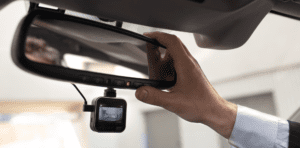Compare European car insurance
✔ Compare cheap car insurance quotes
✔ Over 110 insurance providers
✔ Get a quote in minutes
✔ Save up to £504*


- Can I drive in Europe after Brexit?
- What is a green card?
- What else do I need for driving in Europe?
- What type of European car insurance will I need for driving in Europe?
- Do I need extra cover if I’m driving in Europe?
- How much does European car insurance cost for driving in Europe?
- How can I get cheaper European car insurance for driving in Europe?
- Are driving laws different in Europe?
- How old do you need to be to drive in Europe?
- Compare European car insurance quotes
Planning a European road trip as a UK motorist? You’re in luck! With easy access to multiple countries, driving through Europe has never been simpler. However, it’s crucial to ensure that you have the right cover in case of any unexpected incidents.
In this comprehensive guide, Comparoo covers everything you need to know about European car insurance. With this knowledge, you’ll be able to hit the road with confidence and peace of mind, so you can fully enjoy your journey.
Can I drive in Europe after Brexit?
Brexit has changed the landscape of driving in Europe for UK motorists. Before the transition period ended on December 31, 2020, UK drivers could travel freely across European countries with their UK driving license and a valid insurance policy. However, post-Brexit, things have become a little more complicated.
Drivers from the UK can still drive in Europe, but it is important to take a few extra steps to ensure that you are covered in the event of an accident or other unexpected mishaps. For starters, you will need to make sure you have a Green Card from your insurance provider, which is an international certificate of insurance that proves you have the minimum level of cover required by the country you are visiting. You can also get a motor insurance policy from a European insurance company, which will provide you with a European Accident Statement (EAS) form, which is also accepted in European countries.
Additionally, you may need to carry an International Driving Permit (IDP) along with your UK driving license. An IDP is a translation of your driving license and is recognized in many countries around the world, including many European countries. The type of IDP required will depend on the country you are visiting, so it is important to check before you travel.
In conclusion, while driving in Europe after Brexit may require a little more preparation, it is still possible for UK motorists. By making sure you have a Green Card or a motor insurance policy from a European insurance company, an IDP, and other necessary documents, you can enjoy your road trip with peace of mind.
What is a green card?
A green card, also known as an International Motor Insurance Card, is a form of insurance documentation that is required for drivers who plan to drive their vehicle abroad. The green card proves that the driver has the minimum required level of insurance cover for the country they are driving in. It is recognised by the road traffic authorities of European countries and provides evidence of insurance in the event of a road accident.
The green card system has been in place for many years and ensures that drivers are protected when they are driving in foreign countries. It is important to obtain a green card before travelling, as without it, you may be breaking the law and face significant financial penalties. The green card is usually provided by your insurance company, and the process of obtaining one is straightforward. It is a simple and effective way to ensure you are covered when driving abroad.
Do I need a green card?
UK motorists no longer require a green card when driving in the European Union (EU) and some non-EU countries, including:
- Andorra, Bosnia and Herzegovina, Iceland, Liechtenstein, Monaco, Norway, San Marino, Switzerland, and Vatican City.
This change came about after the UK made a deal with the EU in August 2021 to allow for travel without the need for a green card. However, there are still some European countries, such as:
- Albania, Belarus, Moldova, North Macedonia, Russia, Turkey, and Ukraine, where a green card or local insurance policy is required before driving. The only exception to this is Kosovo, where local insurance can be purchased at the border for a nominal fee.
To obtain a green card for driving outside the EU, simply contact your insurance provider, who can provide you with one. Most insurers offer a digital green card that can be printed or downloaded, while a physical card sent via mail can take up to six weeks to arrive. Obtaining a green card is free, but some insurers may charge a fee for handling the paperwork.
Will I need a green card for driving in Ireland?
If you’re planning on driving in the EU, including Ireland, you can do so without having to carry a green card. Your UK insurance policy will cover you just as it did before Brexit. The requirement for a green card has been eliminated, and the UK made a deal with the EU in August 2021 that allowed for travel without it.
What else do I need for driving in Europe?
When driving in Europe after Brexit, it is important to have the following documents with you at all times:
- Your valid driving licence
- An International Driving Permit (IDP) if your driving license was issued in Guernsey, Jersey, the Isle of Man or Gibraltar, or if you have a paper license rather than a photo card license
- Your vehicle logbook (V5C)
- Your car insurance certificate
- Your travel insurance documents
It is also important to ensure that your car is properly marked as being from the UK. As of September 28, 2021, all UK vehicles must have a UK identifier, and the GB identifier is no longer acceptable.
If your car’s licence plate already has a UK identifier with the British flag, you do not need to display a sticker. However, if your licence plate reads GB instead of UK, displays an English, Scottish, Welsh, or European flag, or has no country indicator, you will need to display a UK sticker. The exception to this rule is if you are driving in Cyprus, Malta, or Spain, where you will need to display a UK sticker regardless of what is displayed on your license plate.
When driving in Europe, keep in mind that they drive on the opposite side of the road. To avoid blinding other drivers, consider purchasing headlamp converters, which are available both online and at your local garage. Additionally, it is important to be aware of local driving laws, such as the requirement in France to keep a high-visibility vest in your car.
What type of European car insurance will I need for driving in Europe?
All drivers operating within the European Union are required to have a minimum of third-party car insurance cover. However, having just third-party insurance may not be sufficient in the event of an accident. If you get into a crash and cause significant damage to your own vehicle, third-party insurance may not cover the costs and you could be left with a hefty bill.
Even if you have fully comprehensive cover in the UK, it is important to note that the level of protection offered while driving abroad may not be the same. Before taking your car overseas, it is crucial to thoroughly review your policy to determine what is covered and what is not.
Here are a few key factors to consider when evaluating your insurance cover for driving in Europe:
Coverage level: Ensure that the level of cover you have in the UK matches the level provided for the country you are visiting.
Countries covered: Confirm that your policy covers the country you are driving in, as some European countries outside the EU (such as Switzerland) may not be included.
Policy duration: Most policies have a limited time frame for cover while driving abroad, typically ranging from 30 to 90 days. If you are planning a longer trip, you may need to pay an additional premium.
Breakdown cover: Determine if your UK breakdown cover can be extended to Europe. This can be especially important if you are stranded on the side of the road in a country where you do not speak the language. You may need to purchase additional breakdown cover to ensure that you are protected while abroad.
Do I need extra cover if I’m driving in Europe?
If you are planning to take your car for a road trip in Europe, it is important to ensure that you have sufficient insurance cover for the trip. While all drivers in the EU are required to have a minimum of third-party car insurance, this type of insurance may not provide enough cover in case of an accident or damage to your own vehicle.
It is essential to check your existing policy carefully to understand what is covered and what is not, and to consider purchasing additional cover if needed.
One option to get extra insurance cover for driving in Europe is to inform your current insurer and request an upgrade of your policy. Most insurance companies will offer to enhance your cover for a small additional fee, making it an easy and convenient solution.
However, if you are not satisfied with the offer from your current insurer, you have the option to consider getting short-term car insurance. This type of insurance provides cover for a specific time period, usually for your entire holiday, and allows you to choose from a range of insurance providers to find a policy that meets your specific needs and requirements. With short-term car insurance, you can enjoy peace of mind and worry-free road trips in Europe, knowing that you are well-protected.
How much does European car insurance cost for driving in Europe?
If you already have car insurance in the UK, your policy typically provides a minimum of 30 days of European third-party cover without incurring any additional cost. However, it is important to note that driving abroad exposes you to additional risks, such as unfamiliar roads and driving on the other side of the road in a foreign language. This increased likelihood of an accident is taken into consideration by insurers.
Therefore, if you want to increase your level of cover while driving abroad, you may have to pay a small additional fee, although the cost is expected to be minimal as the extra cover is only required for the duration of your trip abroad, rather than for a full year.
How can I get cheaper European car insurance for driving in Europe?
In order to keep the cost of car insurance low while driving in Europe, it is essential to consider a few cost-saving options. Firstly, it is recommended to evaluate the need for extras and add-ons during the trip.
Some features like a courtesy car may not be as necessary while on a holiday, and opting out of them could result in lower insurance costs. Secondly, having a good driving record with no claims on insurance over a period of time can lead to a substantial no-claims discount. This can be taken into account by your insurer while determining the cost of European cover.
In case the cost offered by your existing insurer seems too high, it is possible to explore other options. For example, obtaining a short-term car insurance policy can be a more cost-effective solution. It provides the option to compare prices and choose the best deal from several insurance providers.
Are driving laws different in Europe?
Driving laws in Europe can vary significantly from one country to another, and it’s important to be aware of these differences before you take your car abroad. Failing to adhere to local driving laws can result in fines, points on your licence, or even imprisonment. Here are some of the most important differences between European driving laws and those in the UK.
Speed limits: One of the biggest differences between European driving laws and those in the UK is the speed limits. For example, in some countries such as Germany, the default speed limit is usually 130 km/h on motorways, while in the UK, the maximum speed limit on motorways is 70 mph. In some cities, such as Paris, there are low-emission zones where only cars with green stickers are allowed to enter, so it’s important to know about the restrictions in the area you’re visiting.
Seat belts: In many countries, wearing seat belts is mandatory for drivers and passengers, even in the back seat. Make sure everyone in the car is wearing their seat belt, especially if you’re travelling with children, as there can be hefty fines for not wearing seat belts.
Drinking and driving: The legal limit for drinking and driving in most European countries is lower than in the UK. In many countries, you’ll be breaking the law if you have a blood alcohol content of more than 0.05%, whereas, in the UK, the limit is 0.08%.
Road signage: Road signs and road markings can vary greatly between European countries, so it’s important to be aware of the local signs and symbols. It’s a good idea to familiarise yourself with the most important signs and symbols before you go, so you know what to look out for.
In conclusion, if you’re planning to drive in Europe, it’s important to research the driving laws of the country you’re visiting and be prepared for any differences. Ignorance of the law is not an excuse, so take the time to familiarise yourself with the rules of the road before you go. The rules are there for a reason – to keep you, other drivers, and pedestrians safe on the roads.
Tips for driving in France
When driving in France, it is important to be prepared for the roads. Here are a few things to keep in mind:
Tolls – Be sure to carry spare change for tolls or invest in a toll tag for ease.
Right-side driving – French motorists drive on the right side of the road.
Roundabouts – At roundabouts, you must give way to traffic on the left.
Speed Limits – In urban areas, the speed limit is 50 km/h (31 mph), while on motorways it ranges from 110 to 130 km/h (68-80 mph).
How old do you need to be to drive in Europe?
The minimum age for driving in Europe varies from country to country. In most European countries, the minimum age for driving a car is 17-18 years old. However, there are a few exceptions to this, such as in the UK, where the minimum driving age is 17.
It’s important to note that the age limit applies to driving cars, and not all types of vehicles. For example, in some countries, the minimum age for driving a motorbike is 16 years old.
If you’re a foreign driver and want to rent a car in Europe, you will need to be at least 21 years old and have held a valid driving license for at least one year. Some car rental companies may also require a minimum age of 25 years old, regardless of the length of time you’ve been driving.
It is advisable to check the local driving laws before you travel, to ensure that you are fully aware of the rules and regulations for driving in the country you’re visiting. You can also check with your car insurance provider to see if there are any restrictions on the age of drivers.
Compare European car insurance quotes
Comparoo is a comparison website that allows you to compare European car insurance quotes from over 110 providers. By using Comparoo, you can find the cheapest car insurance policy that suits your needs. With just a few clicks, you can compare policies from different providers and find the best deal.
Comparoo allows you to compare policies based on different factors such as cover, deductibles, and discounts. This means that you can find a policy that fits your budget and your cover needs.
On average, Comparoo customers can save up to £504 by comparing car insurance quotes. This is a significant saving that can help you to lower your car insurance costs and keep more money in your pocket.
If you’re looking for cheap European car insurance, Comparoo is a great resource to help you find the best deal. With over 110 providers to choose from, you’re sure to find a policy that fits your needs and budget.










